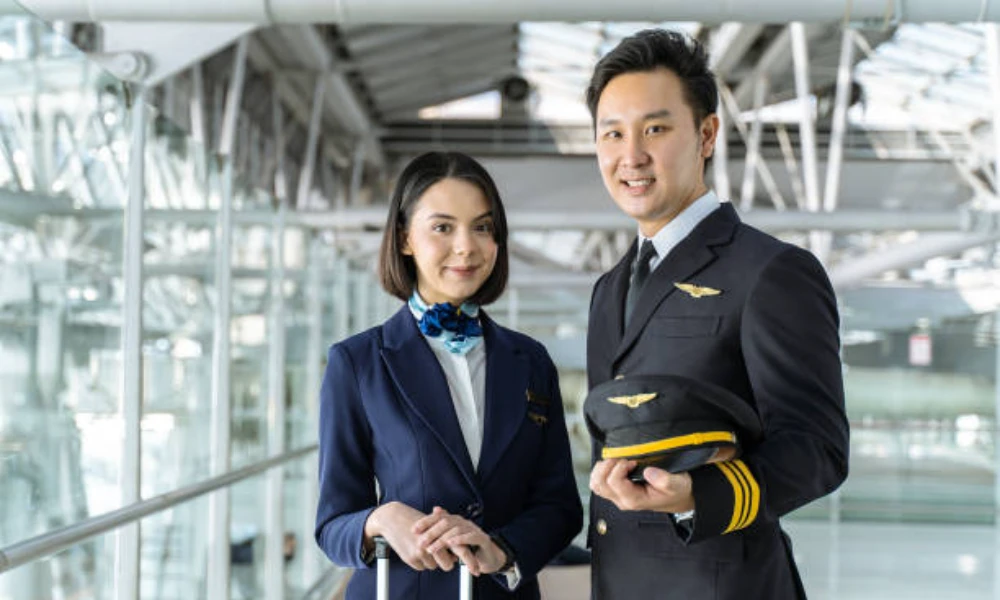
Antonio B. Won Pat
International Airport
Assistance Services
Jodogo simplifies your Antonio b. won pat international airport experience by offering meet-and-greet services, lounge access, and a luxurious limousine for added comfort during your airport transfer. Below are the inclusions covered in our service offerings.
- Meet and Greet at Arrival Gate
- Meet and greet post-immigration
- Wheelchair Assistance
- Porter service
- Assistance at check-in
- Fast Track through immigration
- Priority boarding
- Assistance with baggage handling
- Expedited Service Through Security
- Assistance for terminal transfer
- Escort until car pickup
- Liaise with Driver
- Escort to lounge
- Escort until departure gate
- Buggy Transfer
- Expedited service through Immigration
- Meet and greet at curbside at car drop-off
Antonio B. Won Pat International Airport (IATA: GUM, ICAO: PGUM), also known as Guam International Airport, is an airport located in Tamuning and Barrigada, three miles (4.8 km) east of the capital city of Hagåtña (formerly Agana) in the United States territory of Guam. The airport is a hub for Asia Pacific Airlines and for United Airlines, serving as the latter's Pacific Ocean hub. It is also the home of the former Naval Air Station Agana, and is the only international airport in the territory.
About Antonio B. Won Pat International Airport
Antonio B. Won Pat International Airport (IATA: GUM, ICAO: PGUM), also known as Guam International Airport, is an airport located in Tamuning and Barrigada, three miles (4.8 km) east of the capital city of Hagåtña (formerly Agana) in the United States territory of Guam. The airport is a hub for Asia Pacific Airlines and for United Airlines, serving as the latter's Pacific Ocean hub. It is also the home of the former Naval Air Station Agana, and is the only international airport in the territory. The airport is named after Antonio Borja Won Pat, the first delegate from Guam to the United States House of Representatives, and is operated by the A.B. Won Pat International Airport Authority, Guam (GIAA, Chamorro: Aturidat Puetton Batkon Airen Guahan Entenasionat), an agency of the Government of Guam.
History
Military use
The airport was built by the Japanese Navy about 1943, calling the military airfield Guamu Dai Ni (Guam No. 2) as part of their defense of the Marianas. After the island was recaptured by American forces in 1944, it was renamed Agana Airfield, due to the proximity of the town. After being repaired by Seabees of the 5th Construction Brigade in October 1944, the United States Army Air Forces Seventh Air Force used the airfield as a base for the 11th Bombardment Group, which flew B-24 Liberator bombers from the station until being moved to Okinawa in July 1945. With the reassignment of the heavy bombers, the 41st Photographic Reconnaissance Squadron flew long-range reconnaissance aircraft (F-4 P-38 Lightnings) from the field until January 1946.
After the war, the USAAF used the airfield for fighter defense of the Marianas (21st Fighter Group), (549th Night Fighter Squadron) until early 1947 and as a transport hub (9th Troop Carrier Squadron). In 1947, the USAAF turned over the airfield to the United States Navy, which consolidated its facilities with those at the closing Harmon Air Force Base in 1949, and operated Naval Air Station Agana until it was closed by the 1993 Base Realignment and Closure Commission.
Civilian use
Travel to Guam was restricted to military personnel with a security clearance until 1962. During these early years, a single Quonset hut served as Guam's air terminal. The lifting of this travel restriction spurred the development of the airport; its International Air Terminal opened in March 1967 and accommodated its first tour group from Japan two months later. Operations of the terminal were passed onto the Government of Guam's Department of Commerce in 1969. In 1975, the Guam International Airport Authority (GIAA) was created as a separate agency. After NAS Agana was closed in April 1995, GIAA took over the entire airport's operations.
A new passenger terminal building was opened in 1982, and the current, much larger terminal building was opened in phases between 1996 and 1998.
After a period of seasonal charters, the first regular flight to Mainland China from Guam was established in 2014. The United Airlines service to Shanghai Pudong Airport began on October 29, 2014.
Project Hulo'
In July 2017, the A.B. Won Pat International Airport Authority launched its Vision Hulo' campaign, which includes around $167 million in capital improvement projects to help boost services and operation for the airport. The projects are set to increase the airport's passenger capacity, which already annually serves 3.55 million departing and transiting passengers. The projects include the relocation of bulky baggage screenings, additional security lanes, the expansion of parking spaces, and more.
A $110 million international arrivals corridor, the largest in the project, is the airport's newest capital improvement project. The third level corridor will finally put the airport compliance with federal regulations by the U.S. Transportation Security Administration in 2005, in response to 9/11, by separating arriving international passengers with departing passenger and allowing the airport to finally remove the semi-permanent barriers and reclaim full use of the concourse.
In the initial months of the COVID-19 pandemic in Guam, flights to and from Guam stopped, except for United Airlines, which maintained daily service to Honolulu and thrice-weekly service to Narita. A year later in April 2021, limited flights were being conducted by United Airlines, Philippine Airlines and Jin Air.
Customs, immigration, and security inspections
Arrival passenger inspection is conducted by the U.S. Customs and Border Protection (immigration only) and Guam Customs and Quarantine Agency. Departure security checks are conducted by the U.S. Transportation Security Administration.
Customs
Because Guam is outside the United States customs jurisdiction, passengers from all arrival flights go through Guam Customs and Quarantine Agency inspection. Passengers bound for Honolulu, which is currently the only Stateside flight, go through a normal U.S. Customs and Border Protection customs inspection upon arrival.
Immigration
The U.S. Customs and Border Protection inspects all arriving passengers from foreign points.
Passengers arriving from the Commonwealth of the Northern Mariana Islands, a separate U.S. immigration jurisdiction with slightly different visa requirements, are pre-inspected there for admissibility to Guam. Nonstop passengers bound for Honolulu are pre-inspected at Guam's boarding gate for admissibility to the United States because of the Guam and Northern Mariana Islands Visa Waiver Program, which allows visa-free entry to Guam for tourists from Australia, Brunei, mainland China, Hong Kong (with a Hong Kong Identity Card), Japan, Malaysia, Nauru, New Zealand, Papua New Guinea, Singapore, South Korea, Taiwan (with a Republic of China passport with a National ID number and a valid Republic of China national identity card), and United Kingdom (with a British Citizen passport or a British National Overseas passport).
For U.S. citizens, passports are not required to enter Guam from the Northern Mariana Islands; other forms of identification proving admissibility are accepted. Passports are required for those transiting a foreign country between the United States and Guam.
Transit passengers, except from Honolulu and the Northern Mariana Islands, are also inspected by the U.S. Customs and Border Protection before being allowed to proceed to their connecting gate. Because all onward flights depart Guam's customs jurisdiction, no baggage claim is necessary.
Security
The Transportation Security Administration conducts security inspection for departing passengers and all transit passengers.
Transit passengers who arrive from the United States or the Northern Mariana Islands are screened by Transportation Security Administration at their origins, so they are not screened again in Guam.
Guam–Honolulu passengers who have onward connections must go through Transportation Security Administration inspection again in Honolulu because they will have come into contact with their checked baggage during U.S. customs inspection there.

Facilities
The airport covers 1,657 acres (6.71 km2) at an elevation of 305 feet (93 m) above sea level. It has 2 asphalt runways:
- Runway 6L/24R: 12,015 x 150 ft (3,662 x 46 m.), Surface: Asphalt, ILS/DME equipped, with approved GPS and VOR/DME approaches
- Runway 6R/24L: 10,014 x 150 ft (3,052 x 46 m.), Surface: Asphalt, ILS/DME equipped, with approved GPS approaches
For the 12-month period ending May 31, 2015, the airport had 83,816 aircraft operations, an average of 229 per day: 63% general aviation, 5% air taxi, 30% commercial airline and 1% military. In November 2017, there were 38 aircraft based at this airport: 14 single-engine, 8 multi-engines and 16 jet.
Passenger terminal
The current passenger terminal's first phase was completed on September 10, 1996. The 550,000-square-foot (51,000 m2) terminal included a new customs and immigration hall and a 710 space parking lot. In August 1998 the second phase of the current passenger terminal opened. The expansion program that opened the current terminal had a cost of $741 million. The terminal has three levels. The basement level houses arrival facilities, including customs and baggage claim. The basement also houses the GIAA Airport Police and GIAA Arcade offices and the Hafa Adai Gardens. The apron level (the departure level) houses the ticketing counters. The third floor houses the departure gates, immigration facilities, and GIAA administrative offices. The front of the airport displays stylized latte stone motifs; the latte stone is an icon of modern CHamoru identity.
Since all flights require customs or immigration inspection, the airport's post-security concourse and gate area was not designed to separate arriving and departing passengers. The only normal passenger entrance is through security and the only normal exit is through immigration. Except for the few gates designated for Honolulu arrivals, which route passengers directly to customs, all other gates do not have a separate arrival corridor. Arrival passengers walk directly into the gates waiting area, and in the past could actually purchase food or merchandise before entering the immigration hall.
The original design is said to be compliant with security standards at the time of opening. However, after the September 11, 2001 attacks, the U.S. government began to require separation of uninspected arrival passengers. The airport initially used a system of chairs, moving sidewalks, retractable belts and security/police staffing to usher arriving passengers from the gate to the immigration hall without coming into physical contact with departing passengers. In recent years, semi-permanent movable walls separate much of the length of the terminal building into two halves, decreasing the need for human staffing and those lighter objects previously in use.
There are 2 lounges available to passengers at Guam. One is the Sagan Bisita Lounge and the other is the United Club.
Old terminal building
The old terminal served as the corporate headquarters of Continental Micronesia until late 2010. The 220,000-square-foot (20,000 m2), $43 million Commuter Terminal was dedicated on January 19, 1982. At the time of opening, the Guamanian people referred to the terminal as a "white elephant," believing that the terminal was so large that it would never be fully used. After the current terminal building opened, the old terminal building became the Commuter Terminal (serving Freedom Air and Pacific Island Aviation). By 2003 the Guam International Airport Authority moved commuter airlines out of the Commuter Terminal and leased the entire facility to Continental Micronesia.
Other facilities
Cargo facilities are located between the main terminal and the commuter terminal.
Japan Airlines opened a flight crew training center at GUM in October 2013. JAL trains Boeing 737 and Boeing 767 pilots at the airport, including touch-and-go operations during off-peak hours.
The airport can handle multiple larger aircraft including the former world's largest An-225.
Accidents and incidents
Several fatal accidents have occurred on and near Guam over the years. In total, 367 deaths occurred from 6 different aircraft accidents.
- On August 6, 1997, Korean Air Flight 801, a Boeing 747-300, crashed as it was attempting to land at the airport. Of the 254 people on board, 229 were killed
- On June 10, 2009, Jetstar Airways Flight 20 flying from Kansai International Airport to Gold Coast Airport experienced a small fire in the cockpit apparently caused by a fault in the heating system. The fire was quickly extinguished by the pilots who subsequently diverted the plane to Guam. All 203 people on board were unharmed in the incident. The Australian Transport Safety Bureau determined the cause of the fire to be an overheat related to the use of a polysulfide sealant in the electrical connections to the windshield
Why should you use JODOGO Airport Assistance?
- Avoid long lines and save time: JODOGO's Meet and Greet services help you bypass long queues at the airport, saving you valuable time and ensuring a seamless travel experience.
- Have a stress-free travel experience: JODOGO’s experienced and professional staff will handle every detail of your airport experience, allowing you to relax and enjoy your journey.
- Get personalized attention: JODOGO’s staff provides personalized attention and assistance, ensuring all your needs are met with care and efficiency.
- Enjoy a variety of services: JODOGO offers a variety of services to meet your needs, including Meet and Greet, porter assistance, fast-track check-in and security, and lounge access.
- Benefit from competitive rates: JODOGO offers competitive rates for its services, making it an affordable option for travelers. Enjoy 24/7 support—JODOGO is always available to assist you with your travel needs.
- Experience a smooth and efficient airport experience: JODOGO's staff is trained to deliver a smooth and efficient airport experience for every traveler.
- Feel confident and secure: JODOGO's knowledgeable and experienced staff ensures you are always in good hands.
- Relax and enjoy your trip: With JODOGO's assistance, you can relax and enjoy your journey, knowing your airport experience is fully taken care of.
FAQs for Airport Assistance
- Visit our website: Go to https://www.jodogoairportassist.com/airports/antonio-b-won-pat-international-airport.
- Fill out the online form: Provide your flight details, arrival/departure information, and desired services.
- Select your preferred payment method: We accept major credit cards and PayPal.
- Confirm your booking: Upon confirmation, you'll receive an email with all the details.
Yes, we offer VIP concierge services at Antonio B. Won Pat International Airport to provide a luxurious and personalized experience. Enjoy dedicated assistance with everything from luggage handling and expedited procedures to luxury transportation and personalized airport lounge access.
Additional Services:
- Antonio B. Won Pat Airport VIP Services
- Antonio B. Won Pat Airport Fast Track
- Antonio B. Won Pat Airport Special Assistance
- Antonio B. Won Pat Airport Private Transfers
- Antonio B. Won Pat Airport Personal Assistant
Please note: This FAQ content is intended to provide a general overview of our services at Antonio B. Won Pat Airport. Visit our website for the latest information and specific details regarding our services and pricing.
For more information visit our website: https://www.jodogoairportassist.com/services
Related Airports

In Palm Beach, Redefining Airport Assistance Services, we at JODOGO aim to make your experience smooth, hassle-free, and a memorable one. Our team is expert at giving you a unique and luxurious VIP-like experience from the moment you step into the airport until you reach the destination and take care of all the travel formalities, be they international or domestic, while you can sit back and relax.

Newark Liberty International Airport originally Newark Metropolitan Airport is situated between Newark in Essex county and Elizabeth in Union county, New Jersey. This airport is one of the busiest airports in the United States for international passenger traffic and was built on 68 acres of marshland in 1928 and later expanded.




